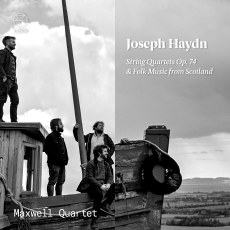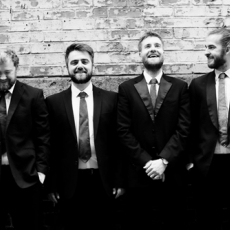Maxwell Quartet - Haydn: String Quartets Op. 74 - Folk Music from Scotland - Gramophone
Whereas Haydn’s earlier quartets were designed for players and a small group of connoisseurs, his Opp 71 and 74 were tailored for public performance in London’s Hanover Square Rooms. If anything, the Op 74 trilogy goes even further than Op 71 in its dramatic contrasts of texture, register and, especially, key. Haydn here surpasses even himself in his theatrical plunges on to alien chords. In the powerful opening Allegros of Nos 1 and 2 he seems to set himself the challenge of simulating orchestral sonorities without overstepping the bounds of true chamber style. The racy finale of No 1 breaks into a riot of skirling bagpipes, while at the other end of the spectrum the Largo assai of No 3 is paradoxically music of extreme inwardness and extreme textural flamboyance.
As in their debut disc of Op 71 (5/19), the Maxwell Quartet respond eagerly to the boldness and brilliance of these predominantly extrovert works. While alive to the moments of mystery in the fast movements – say, the soft dip from C to A flat near the end of the first movement of No 1 – they always seem to be playing to an imaginary audience. Their precision and contrapuntal clarity at speed match all comers in the finales of Nos 1 and 2, where Haydn puts the lower instruments through their paces. The minuets have a lively kick. No 2’s, with no tempo marking, is a swinging allegro; and here and elsewhere leader Colin Scobie decorates repeats and pauses with playful embellishments which I suspect would have delighted Haydn.
While the Maxwell’s steady pacing for No 2’s first movement makes for a chunky, muscular reading – the blithely tripping opening theme is deceptive – the outer movements of the Rider, No 3, seem a mite cautious. The Lindsays (ASV, 12/05) may be less technically perfect. But what Duncan Druce called their ‘controlled wildness’ makes the finale of No 3 a thrilling roller-coaster ride. Throughout, The Lindsays tend to probe extremes, living more dangerously than the Maxwell in the finales, and making the trios of Nos 1 and 2, both in remote keys, dream interludes amid their forthright minuets. And while No 1’s serenading Andantino has a perky charm in the Maxwell’s hands, The Lindsays give it a gentler, more affectionate cast. That said, the Maxwell realise all the majesty and strangeness of No 3’s Largo assai, whether in their shrouded pianissimo in the theme’s second half, or the leader’s theatrical swoops and plunges in the reprise – controlled wildness, indeed.
As on their Op 71 recording, the Maxwell – Scottish to a man – interleave the three quartets with their own arrangements of Scottish reels, jigs and pipe marches. The juxtaposition seems specially apt when the transfigured bagpipes of ‘Coilsfield House’ follow the raucous folk-fest of No 1’s finale. In their lively note the players lament that Haydn never visited Scotland (he never ventured north of the Home Counties) to experience its folk tradition at first hand. He did, though, make dozens of Scottish folk-song arrangements, while his (probable) lover in London, Rebecca Schroeter, was of Scottish blood. Some consolation, surely.

